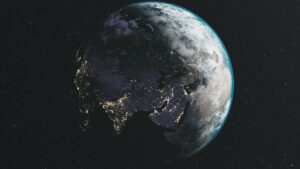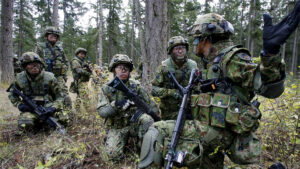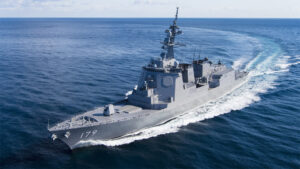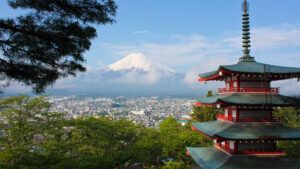Jump to other parts of this series: Intro, France, Germany, UK, Italy, and Canada.
Japan was a latecomer to the modern world.
The Home Islands are rugged territory with few chunks of flat land that can play home to the sort of agricultural infrastructure from which most cultures rise. Geography made transport between these little pockets of land treacherous and rare. Combined with a dearth of local resources much of Japanese history right up until the industrial age was flat out feudal. Local leaders would rise and fall based upon local politics and dynastic struggles. Family was everything. The odd imperial impulse towards unification did occur, but typically the emperor’s powers were of the limited sort. Most competitions had a distinctively local feel. Hell, most names had a distinctively local feel. Most Japanese commoners didn’t have last names until after 1868.
The islands’ distance from the Asian mainland combined with China and Korea’s brand of insular chaos layered on more locality; aside from pirate raids, Japanese interaction with the mainland was at most episodic. Foreign ideas, culture, technology and norms were a world away. Life was slow. While the Germans and Americans and Brits and French and others were using (early) industrial volumes of steel in railroads and stoves and weapons in the first half of the nineteenth century, pre-industrial Japan’s steel use was pretty much constrained to a handful of implements and those famous samurai swords.
But then the Americans arrived.
Admiral Matthew Perry’s flotilla of hybrid sailing-steam ships likely comprised more steel than had been produced by all Japanese in the previous decade. The world realized Japan wasn’t some mystical kingdom, but instead a hugely, hilariously, outdated backwater. The tsunami of American trade – and the new technologies that came with it – surged across Japan, wiping away and transforming the country’s entire political, social, cultural and economic system in what is arguably the most holistic transformation in modern history. It wasn’t an entirely pleasant experience, including as it did the greatest industrial buildup in history, regional civil wars, a class-based genocide, a massive imperial expansion, and a fascist rise to power,
It happened so quickly that Japanese cultural mores couldn’t possibly keep up.
The Japanese thought of their enclavic geography as granting them infinite variety, but when exposed to the kaleidoscope of the wider world they realized just how uniform Japanese culture was. The Home Islands’ isolation sharply limited contact with the wider world; the Japanese are nearly homogenized racially, not just compared to multi-ethnic America but even to rather monochromatic places like Vietnam or Korea.
The sudden exposure encouraged some significant rank-closing, further deepening Japan’s cultural monolith. And since the consolidation occurred during a time of rapid economic development and technological advancement, cultural unity became synonymous with the ideals of Japanese superiority and invincibility.
Cross that cultural tweak with Japan’s geography and East Asia got something new… and dangerous. For Japan wasn’t simply a unified nation, it was a unified island nation – and islands have navies. Industrial prowess, an industrialized navy, a culture bordering on the wrong side of haughty with a burning desire to show its neighborhood just how invincible and superior it really is… you can see where this is going.
Japan’s participation in the Second World War resulted in the imposition of a regional brutality that while not as industrialized as Germany’s Holocaust, was more pervasive through the Japanese armed forces. More casual in its application.
The combination of cultural arrogance and the reach of an industrial navy inevitably brought the Japanese into sharp conflict with the Americans, who eventually rolled the Japanese all the way back to the Home Islands. The post-WWII settlements were crushing – Japan lost absolutely everything from over a generation of imperial expansion. That made sense to the Japanese. They had lost the war so they lost territory.
But the post-WWII order the Americans imposed was downright bizarre from the Japanese point of view. Through the Bretton Woods system, the Americans offered the Japanese everything they had fought for for decades: access to global resources and global markets. In addition, the Americans offered to protect the Japanese from all threats. In exchange all the Americans asked for was that the Japanese join an alliance expressly designed to combat a country that the Japanese had crossed swords with three times in the past half century. Confusion reigned, but the Japanese know a good deal when they see it. They signed up for Bretton Woods eagerly.
The American occupation continued with the now-familiar Japanese tradition of root-and-branch overhaul. The emperor was stripped of everything except his clothes. Democracy was imposed. Bombed out cities – three of which were little more than cinders – were rebuilt from the ground up. The Americans used Japan as a launching pad for their military operations, first in Korea and later in Vietnam. By the early 1960s, Japan had recovered and was humming along nicely.
And then the changes… stopped.
Sure, the newest technologies were still layered into the Japanese system as soon as they were developed, sure booms and recessions came and went, but there were no wars. No political revolutions. No jarring cultural upheavals. No coups. No invasions – either by Japan or of Japan. No shocks – internal or external.
For the next fifty years.
After a century of shock and reinvention and revolution and war and pain, Japan simply was allowed to… be. In a way, time stopped. In a way, Japan walled itself off from the world again. In a way, the average Japanese citizen’s interactions with the world ended.
In a way Japan’s cloistered narcissism returned.
Now the Americans are backing away from it all. All at once the Japanese are discovering the global structures which enabled them to be wealthy while also being isolated are evaporating. That there isn’t a thing Japan can do to preserve the world order. That very soon they will have to choose between wealth and isolation. Considering that one involves high living standards, electricity and full bellies, I’m pretty sure I know which they’ll go for.
But East Asia isn’t as simple a place for the Japanese in 2018 as it was in 1928, because the Japanese were not the only Asian peoples the Americans brought into Bretton Woods.
Taiwan too came in early, and became nearly as technologically sophisticated as Japan. Access to global markets combined with American military protection transformed backwards, poor, wrecked Korea into an industrial powerhouse. Richard Nixon and Jimmy Carter brought mainland China into the fold, starting Beijing on the path to the colossus it would become.
With the Americans leaving, Japan finds itself in a struggle to be Asia’s first power. Unlike in 1928 when Japan was industrial and the rest of Asia undeveloped, the whole East Asian rim is overflowing with industrial might. No longer is Japan towering above the rest.
But that hardly means Japan is going to lose. All Japan’s perceived vulnerabilities are real, but in all cases those same vulnerabilities apply to all its East Asian neighbors – where they are all far more serious.
- All the East Asian powers face a dependency upon foreign markets, but Japan has long since offloaded its production capacity to be on the safe side of currency and political risk. Its trade exposure is less than a third relative to its economic size of any of its neighbors.
- All the East Asian powers have horrid demographics, but Japan mastered automation over a decade ago and has been steadily modifying its industrial base to operate in a world of constrained supply chains ever since. As a percent of GDP, Japan’s vulnerability to disruption is a shadow of everyone else’s.
- All the East Asians face cultural difficulties in dealing with other countries, and Japan has utterly failed to collaborate with its neighbors as equals. Yet far from weakening Japan this exclusionary attitude has forced the Japanese to find economic and technological means around immigration. For example, a refusal to admit foreign health workers has lead to the rapid rise of automation and AI in geriatric care. This not only generates positive knock-on effects throughout the Japanese economy, it keeps a large chunk of the Japanese economic system in-house and utterly immune to the ebbs and flows of the international environment.
- All the East Asian powers are hugely dependent upon oil imports, but Japan sits on the outside of the island chain that constrains Asian mainland access to the world. Japan also has a long-reach navy that can go almost anywhere in the world without encumbrance.
- All the East Asian powers are poor in any sort of electrical input fuel whether it be high-quality coal, natural gas, or uranium. Not only does Japan’s geographic position enable easy access to diversified sourcing, but Japan’s overbuilt power system enables it to fuel switch with a few days’ notice to whatever imported inputs Tokyo can scrounge up. (For those Greens out there, East Asia has pathetically low wind and solar potential too.)

My concerns are twofold.
First, part of what made the Asian theaters of the Second World War so nasty was the norms of cultural and racial superiority that emerged from Japan in the pre-war decades. While democratic Japan today is a far cry from the imperial fascism of the 1930s, the Bretton Woods system has certainly enabled pieces of the old cultural milieu to re-entrench. The sort of culturally isolated Japan that exists today, combined with a technologically advanced navy, and a need to use that navy to achieve national prerogatives feels uncomfortably familiar.
Break the global system and it is devilishly easy to imagine an East Asia where the Japanese are not simply on the warpath (again), but one where the Japanese are less than gentle with countries who disagree with them. Most focus on the likelihood of Chinese aggression throughout the region. I think that’s a bad reading of East Asia’s geographic, industrial, trade, and historical characteristics – both past and present.
Second, is the issue of “what then?” I typically try to limit my forecasts to the next couple of decades. Past that range, changes in demography and politics and culture and technology tend to layer in a lot of future fog that limits data-and-geography-fueled forecasting to little more than armchair prognosticating. But if the Japanese have the deck so stacked in their favor, I believe it is useful to push a bit further forward and guess at what’s just over the horizon. What happens after the Japanese have re-established some version of a mercantilist colonial relationship with their region, an Asian Co-Prosperity Sphere, if you will?
More than any of the other major players, Japan needs to be cognizant of American goals, interests and whims. The United Kingdom is in tight and won’t break with Washington. Canada is family. Family fights, but family also makes up. The Germans and Italians swim in different ponds. The French will be the French, but there’s no real likelihood of meaningful French structural competition with North America.
But Japan is likely to emerge from the coming Disorder as the dominant regional power. Its relations with everything from Vladivostok to Yangon will be a diverse mix of neo-imperial management systems ranging from alliance to partnership to suzerainty to occupation. That sort of dynamism and variety is certain to suck in external powers. And this phase in American isolationism is just that: a phase. It will end.
Of all the soon-to-be-rising powers, it is Japan which must tread most carefully to ensure it doesn’t step on Washington’s toes. Tokyo remembers full well what miscalculation in that department leads to.









